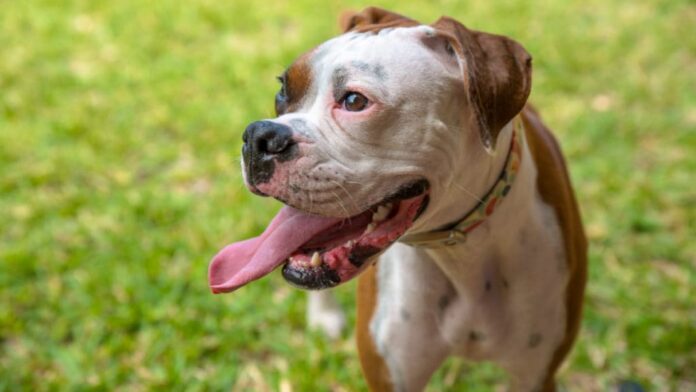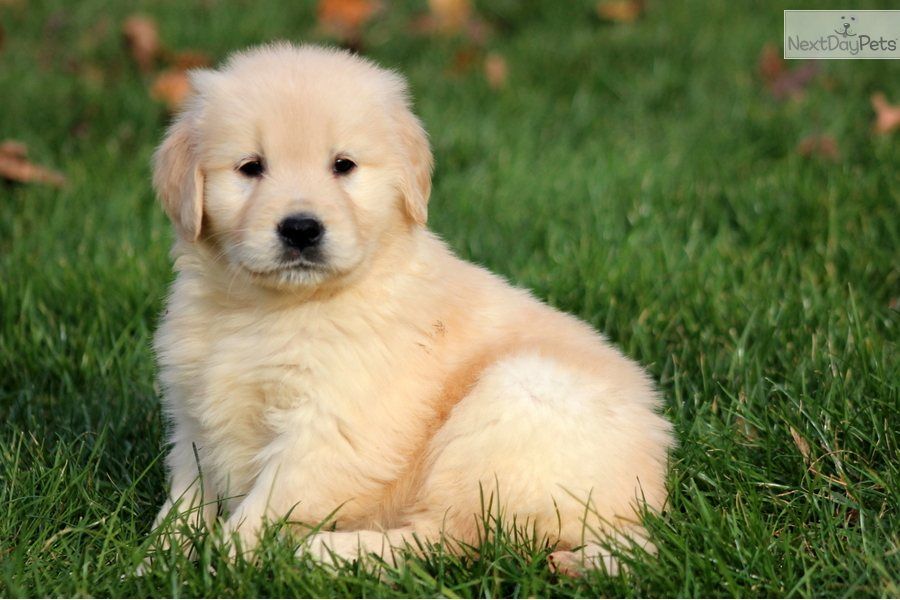Last Updated on October 16, 2023 by Fumipets
Why Is My Dog Panting at Night? 9 Common Reasons
Dog panting at night can be caused by various factors, and it’s essential to understand the potential reasons:
-
Metabolic Disorders: Conditions like diabetes and Cushing’s Disease can lead to excessive panting at night.
-
Illness or Injury: Panting may signal an underlying health issue or discomfort. It’s crucial to consult a vet if this behavior is persistent.
-
Stress and Anxiety: Dogs can experience stress and anxiety, leading to nighttime panting. Environmental changes or fear can trigger this response.
-
Overheating: High temperatures or inadequate sleeping arrangements can cause a dog to pant at night.
-
Pain: Dogs in pain may pant to cope with discomfort. Identifying the source of pain is vital.
Dogs don’t have sweat glands, so they release body heat through their paw pads and panting instead of sweating like humans do when exposed to the hot summer sun. When a dog pant, heated air is expelled from the body and cold air is inhaled to control body temperature via evaporation.
You may have noticed that dogs frequently pant after a hot-day stroll or after vigorous exercise like running, and this is completely normal. We must ensure that your dog has access to fresh, clean drinking water in order to help it restore its hydration levels because when it pants to control its body temperature, it will lose a significant amount of water through evaporation.
But what if your dog starts panting in the middle of the night? What might that be due to? Let’s look more closely.
Most Likely Cause of Panting: Heatstroke
When they are happy to meet someone, get a treat, or have the chance to play with their favorite toy, excited dogs frequently pant, wag their tails, and whine.
There is no cause for concern because panting in these situations is common in all dogs.
However, in the case of heatstroke, panting can also signify a serious condition. Even though it’s less likely to occur at night, we’ll outline some potential problems first before delving deeper into nighttime factors.
Heatstroke
Heatstroke is a medical emergency in animals. A dog can easily become overheated, rapidly become dehydrated, and even pass away in severe weather.
Heatstroke tends to happen in:
dogs that are exercised without resting or consuming water.
dogs that are let out in the sun without access to shade on hot, sunny days.
On warm days, dogs inside of cars are susceptible to overheating.
Heatstroke symptoms include heavy panting, restlessness, laying flat, or even passing out. Offer your dog cool (not cold) water to drink and try to gradually lower its body temperature by putting it in a space with a regulated temperature, such an air-conditioned room or vehicle, or by wrapping its body in cool towels while you travel to the vet’s office. The dog will most likely need some IV fluids once in the clinic to assist in restoring his normal body temperature and hydration level. It will be necessary to take a blood sample to examine the internal organs.
However, if a dog is panting at night, particularly if the outside temperature is normal, it usually means that something else is wrong and needs to be looked into more. If the panting is unrelated to exercise or the temperature outside, something else is probably going on.
The 9 Common Reasons Why a Dog Might Be Panting at Night
1. Stress
Dogs may indicate stress by panting in addition to expressing enthusiasm. You may discover a way to soothe the dog by carefully examining the situation, the dog’s other body language, and any fresh stimuli that could be upsetting the dog. Stress-related panting in dogs is often accompanied with wide-open eyes and a restless appearance. Pheromone diffusers might aid your worried dog in calming down before the situation worsened into worry and panic, in addition to identifying and eliminating the stressor element.
2. Anxiety and Fear
Anxious or fearful dogs will pant, drop their tails between their legs, and have wide-open eyes, much as a stressed-out dog does. Some will flee to hide, while others will tremble. Dogs often exhibit this behavior when there are thunderstorms or pyrotechnics. For a dog, this is a highly distressing experience. Depending on how severe the anxiety is, speaking with a veterinarian about the possibilities of soothing treats, special diets, or even prescription medicine as anti-anxiety therapies may be the best course of action.
3. Pain
Pain-affected dogs may pant and have an increased heart rate and breathing rate. It is obvious that panting is connected to discomfort if you notice your dog is limping. Even if there are no obvious injuries, your dog might still be in agony from an internal organ problem or some hidden ailment that requires a vet’s attention.

4. Anemia
Red blood cells are insufficient in anemia, which prevents oxygen from reaching all of the body’s organs. Organs without enough oxygen cannot function properly. Anemia may have a number of distinct types and causes, such as parasites, blood loss, toxicity, and illness. Anemic dogs often pant excessively and have pale gums in addition to seeming exhausted. The veterinarian must look into the condition’s cause in order to effectively treat the anemia.
5. Cushing’s Disease
An excessive amount of cortisol is secreted by the adrenal glands in Cushing’s disease, an endocrine illness. This condition may be brought on by a number of things, such as pituitary or adrenal gland tumors or chronic corticosteroid usage. One of the defining symptoms of canine Cushing’s disease is panting.
A pot-like belly, increased thirst, urine, and hunger are further telltale indications. Older dogs are more likely to have Cushing’s disease, which requires specific testing to be correctly identified. The underlying cause will determine the Cushing’s management strategy. Oral medications may be used to treat certain conditions, while complicated surgeries are needed in others. A veterinarian who makes a diagnosis should be able to suggest a course of action.
6. Heart Disease
The organ that pumps blood is impaired when it is not functioning correctly. One indication of heart problems is panting. Dogs may get parasites like heartworm, which they can acquire by the sting of an infected mosquito larva, which can lead to heart disease. Dogs that reside in places where the parasite Dirofilaria immitis, often known as heartworm, is very prevalent should have a preventative monthly medication. By using products like Heartgard, this roundworm infection is prevented. Arrhythmias, cardiomyopathies, and valve problems are some more non-infectious types of heart illness.
7. Cognitive Dysfunction
Older canines have cognitive impairment, a condition that resembles dementia. Among the various symptoms of this illness are nighttime pacing and panting. A degenerative condition called cognitive dysfunction affects the brain and memory, altering the motor and behavioral abilities of dogs. Although there is no known therapy for this ailment, management alternatives include dietary supplements, drugs, and ways for changing one’s behavior.
8. Medications
Prednisone and steroids are two well-known medications that may make dogs pant. If your dog is on medicine and is panting excessively, you should talk to the vet about the problem.
9. Facial Structure
Due to the airway blockage brought on by their anatomical structure, brachycephalic dog breeds like Pugs, Boxers, and Bulldogs sometimes exhibit odd snoring-like noises when they pant. They are more prone to heat stroke due to the same blockage.
Similar to Labradors and Golden Retrievers, Labradors and Golden Retrievers may have laryngeal paralysis, a condition in which the voice cords do not expand widely enough to permit normal airflow, resulting in an abrasive sound. Again, the airway blockage increases the risk of heatstroke in these breeds.
Conclusion
When dogs are aroused, engaged in routine, moderate physical activity, or seeking to expel some body heat, panting may be considered typical behavior. The probability and hazards of heatstroke should be taken into consideration while treating excessive panting and unusual behavior on a hot day. When a dog pants at night, there may be other problems that need to be looked at.
Please see the vet right away if your dog is panting and displaying other symptoms including difficulty breathing, coughing, a lack of food, poor activity, or any other change in behavior that worries you.
As always, you are the expert on your dog, so if you observe a change in behavior and have reason to be worried, it is always wise to err on the side of caution and address any medical concerns as soon as possible.
https://www.youtube.com/watch?v=UK7b_DKc6rY
Questions & Answers:
What are some common metabolic disorders that can cause panting in dogs at night?
Metabolic disorders like diabetes and Cushing’s Disease are common culprits
How can I differentiate between normal panting and abnormal panting at night?
Abnormal panting is excessive, often unrelated to heat or exertion, and may signal an underlying issue
Can stress and anxiety cause dogs to pant at night?
Yes, stress and anxiety can lead to nighttime panting, especially when dogs are exposed to stressors
Should I be concerned if my dog pants at night due to overheating?
Yes, overheating can be harmful to dogs. Ensure they have a cool sleeping environment and access to water
How can I identify if my dog is in pain when panting at night?
Observing your dog’s behavior and seeking professional advice can help identify the source of pain, allowing for proper treatment


















